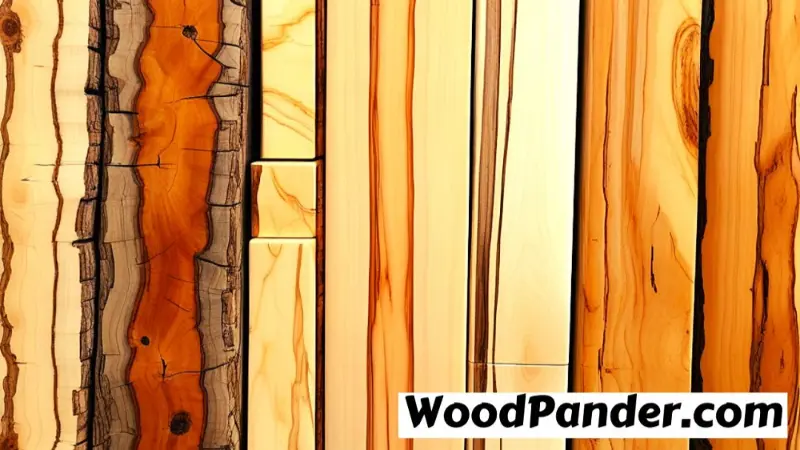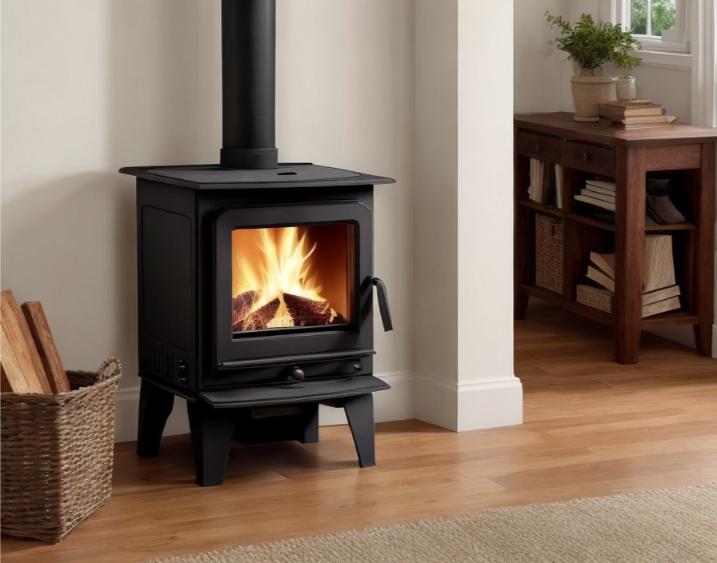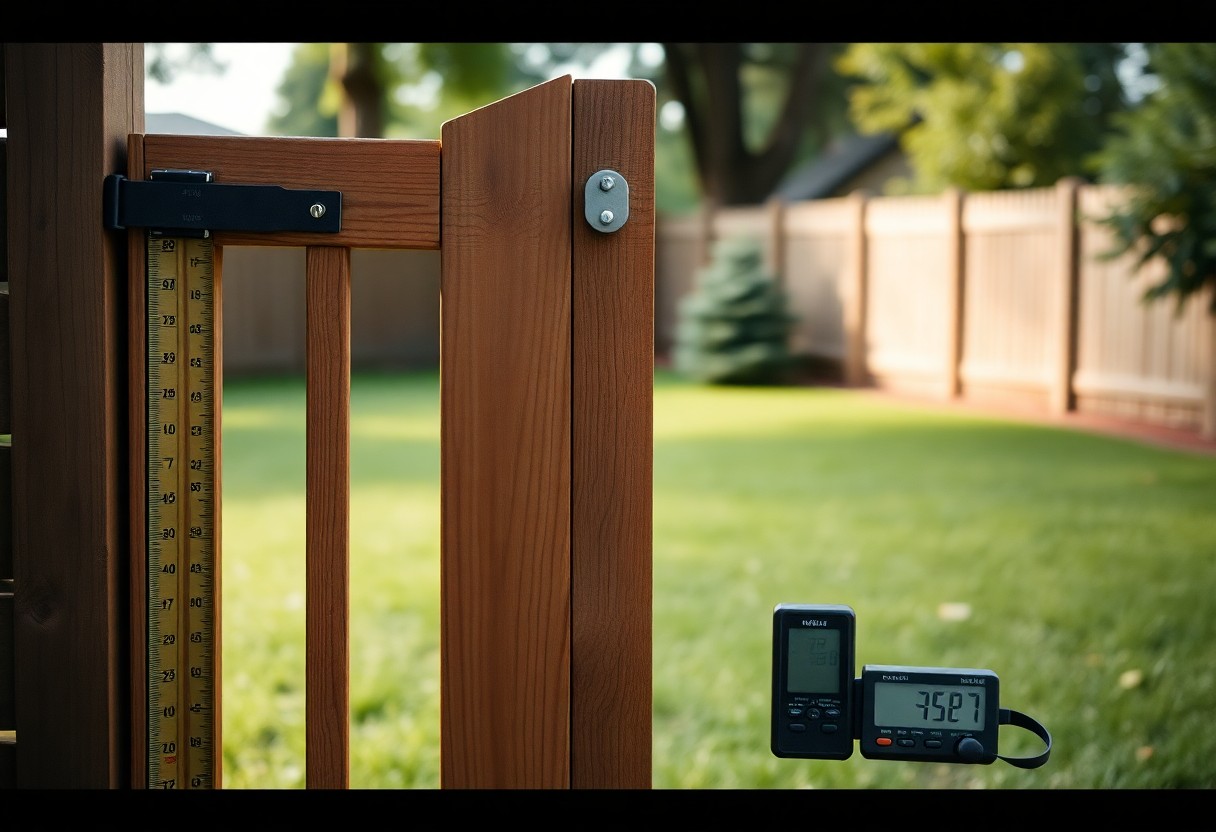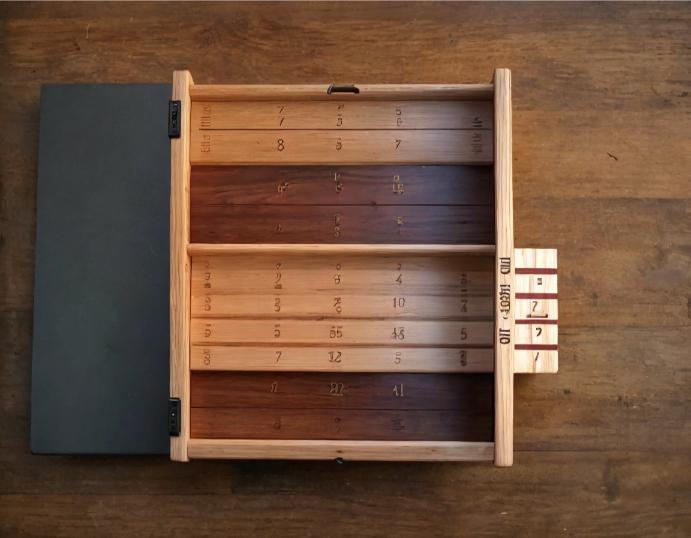Welcome to our comprehensive comparison of two popular types of maple wood – Ambrosia Maple vs Spalted Maple. As professional woodworkers, we understand the importance of selecting the right type of wood for your project. That’s why we’re here to help you understand the unique characteristics of these two woods and determine which one is best suited for your woodworking needs.
Both Ambrosia Maple vs Spalted Maple offer distinct aesthetic qualities that make them a desirable choice for woodworking enthusiasts. Both types of maple wood have their own unique characteristics and potential applications, and understanding these differences is crucial in making informed decisions for your projects.
Throughout this article, we will explore the distinctive features of Ambrosia Maple and Spalted Maple, comparing their characteristics, uses, and pros and cons. We will also guide you through the process of determining the best maple wood for your project needs, helping you choose between Ambrosia Maple and Spalted Maple.
- Understanding Ambrosia Maple
- Exploring Spalted Maple
- Key Differences between Ambrosia Maple and Spalted Maple
- Characteristics of Ambrosia Maple
- Characteristics of Spalted Maple
- Applications of Ambrosia Maple
- Applications of Spalted Maple
- Pros and Cons of Ambrosia Maple
- Pros and Cons of Spalted Maple
- Choosing the Best Maple Wood: Decision-Making Factors
- Conclusion
- Related Questions
Understanding Ambrosia Maple
At our woodworking studio, we appreciate the distinctiveness of Ambrosia Maple.
This type of maple wood features unique characteristics that set it apart from other maple wood types. Here, we will explore the specific characteristics of Ambrosia Maple, its various uses, and how it is graded.
Ambrosia Maple Characteristics
Ambrosia Maple is known for its distinct appearance and unique grain patterns. It is infused with ambrosia beetles, which create intricate streaks and patterns in the wood.
These patterns can take on a grayish-brown hue, and they are sometimes accompanied by small pinholes that the beetles leave behind. The precise coloration and pattern of Ambrosia Maple can vary depending on the individual tree and the specific location where it was harvested.
The distinctive qualities of Ambrosia Maple make it a popular choice for woodworking projects that call for a touch of natural beauty. Its unique grain patterns can add depth and texture to a variety of items, from furniture to decorative accents.
Ambrosia Maple Uses
Due to its striking appearance, Ambrosia Maple is often utilized in furniture making, cabinetry, and decorative woodworking projects.
The unique grain patterns of this type of wood make it highly desirable for creating visually engaging pieces that showcase the natural beauty of the wood. Its popularity in furniture design stems from the warmth and character it brings to the finished product.
Ambrosia Maple Grading
Ambrosia Maple is typically graded alongside other types of maple wood to ensure quality and consistency.
The grading process takes into account factors such as the wood’s color, grain pattern, and overall aesthetic appeal. Ambrosia Maple is generally considered a lower-end maple wood due to its irregularities, but this does not detract from its popularity with woodworkers who seek out the unique patterns and coloration it provides.
Ambrosia Maple Furniture
Our woodworking studio has worked extensively with Ambrosia Maple in creating furniture pieces for clients.
The distinct appearance of the wood can provide a beautiful and unique touch to custom furniture pieces that cannot be replicated with any other type of wood. Its versatility also allows for it to be incorporated into a wide range of designs and styles, from modern to rustic, making it a go-to choice for many aspiring woodworkers.
Exploring Spalted Maple
Spalted Maple is a beautiful and unique type of maple wood characterized by its intricate patterns and coloration, which result from naturally occurring fungal growth within the wood. This process creates black lines and other distinct markings within the wood, adding to its distinctive character.
Due to its aesthetic appeal and durability, Spalted Maple is a popular choice for woodworking projects, particularly in furniture making. The unique patterns and texture of Spalted Maple make it a standout piece in any room and a true conversation starter.
Spalted Maple Characteristics
Spalted Maple has several characteristics that set it apart from other types of maple wood. These include:
- Distinctive coloration: Spalted Maple typically has a light to medium brown color, with dark black lines or streaks running throughout the wood.
- Unique grain patterns: The fungal growth within Spalted Maple creates a variety of patterns, including waves, spots, and stripes, making each piece of Spalted Maple truly one-of-a-kind.
- Durability: Like other types of maple wood, Spalted Maple is known for its strength and durability, making it a reliable choice for long-lasting woodworking projects.
Spalted Maple Uses
Spalted Maple is a versatile wood that can be used in a variety of woodworking projects. Due to its unique patterns and coloring, it is often used in decorative and specialty pieces, such as:
- Furniture: Spalted Maple is a popular choice for furniture, particularly for pieces that are meant to stand out and make a statement.
- Home decor: From picture frames to candle holders, Spalted Maple is a great choice for creating decorative items that add a touch of natural beauty to any room.
- Woodworking crafts: Spalted Maple can be used in a variety of woodworking projects, including cutting boards, knife handles, and other small items.
Spalted Maple Grading
When selecting Spalted Maple for a woodworking project, it is important to understand how it is graded in order to ensure the highest quality and consistency.
The most common grading factors for Spalted Maple include:
| Grade | Description |
|---|---|
| FAS | The highest grade of Spalted Maple, with minimal defects and uniform coloration throughout the wood. |
| Select | Similar to FAS, with some minor defects allowed. |
| #1 Common | Has more defects, such as knots and discoloration, but still suitable for many woodworking projects. |
| #2 Common | The lowest grade of Spalted Maple, with more noticeable defects and color variation. |
Understanding Spalted Maple grading helps ensure that your woodworking project meets your standards for quality and consistency.

Key Differences between Ambrosia Maple and Spalted Maple
In this section, we will highlight the differences between Ambrosia Maple and Spalted Maple, conducting a comprehensive Ambrosia Maple vs Spalted Maple comparison to help you choose the best type of maple wood for your woodworking project.
| Aspect | Ambrosia Maple | Spalted Maple |
|---|---|---|
| Appearance | Ambrosia Maple is known for its distinct grain patterns and color variations, created by the infestation of ambrosia beetles. These patterns are usually less pronounced than those of Spalted Maple. | Spalted Maple has distinctive black lines and streaks caused by fungal growth. The fungal growth on the wood can create beautifully intricate patterns and coloration that can be more pronounced than those of Ambrosia Maple. |
| Grain pattern | The grain pattern of Ambrosia Maple is relatively consistent, with occasional swirls and waves. | Spalted Maple has a more unpredictable and varied grain pattern, often with wavy lines and intricate patterns. |
| Durability | Ambrosia Maple is a durable wood, but its durability is often dependent on the condition of the ambrosia beetles that have infested it. The wood may also contain soft areas where the beetles have tunneled. | Spalted Maple is less durable than Ambrosia Maple due to the fungal growth that causes it to decay more quickly. However, proper drying and treatment can increase its overall lifespan. |
| Availability | Ambrosia Maple is readily available in the market and is often less expensive than Spalted Maple. | Spalted Maple is less readily available than Ambrosia Maple, and is often more expensive due to its unique and intricate patterns. |
As you can see, there are several key differences between Ambrosia Maple and Spalted Maple. Comparing Ambrosia Maple and Spalted Maple will allow you to make an informed decision about which type of wood to use for your specific woodworking project.
Characteristics of Ambrosia Maple
We are now going to take a closer look at the specific characteristics of Ambrosia Maple. This type of maple wood is known for its unique and intricate grain patterns, which are caused by the ambrosia beetles that infuse the wood with enzyme-rich fungi.
The result is a beautiful and distinct pattern that sets Ambrosia Maple apart from other wood types.
Ambrosia Maple can be graded in several ways, including by the level of insect infestation, the amount of discolouration caused by the enzymes, and the quality of the wood grain. Generally, the higher the grade, the more consistent and aesthetically pleasing the wood will be.
One unique feature of Ambrosia Maple is its colour variation, ranging from pale white to a light brown hue.
This diversity in colour can provide a natural and subtle contrast in your woodworking projects. Despite its unique patterns, Ambrosia Maple is a relatively stable wood and is easy to work with, making it a popular choice among woodworkers.
Characteristics of Spalted Maple
Spalted Maple is marked by its unique patterns and coloration resulting from fungal growth that occurs naturally in the wood. This process creates “zone lines” that intersect with the wood’s natural grain, creating intricate displays that are highly sought after in woodworking.
One characteristic of spalted maple is that it can be challenging to work with. When the fungi are active in the wood, it can cause soft spots, and the wood can become brittle. As such, woodworkers must carefully monitor the wood’s moisture content during the spalting process to ensure that it is stable and durable enough for use in their projects.
Spalted Maple grading is done based on the degree of spalting, with higher grades indicating more intense and visually striking zone lines. The wood’s stability, consistency, and density are also essential considerations in grading and selecting Spalted Maple for woodworking projects.
“Spalting is a unique process that brings out the beauty in the wood, but it’s important to manage the spalting process carefully to ensure the wood is stable and usable.”
Applications of Ambrosia Maple
Ambrosia Maple is a popular choice for woodworking projects due to its unique characteristics. Its aesthetic appeal and versatility make it suitable for various applications, including furniture making. Here are some of the most common uses of Ambrosia Maple:
| Application | Description |
|---|---|
| Tables | Ambrosia Maple’s distinctive grain patterns and coloration make it an excellent choice for tabletops and other furniture pieces. |
| Cabinets | Its unique appearance and durability make Ambrosia Maple a commonly used wood for cabinets and other storage solutions. |
| Decorative Pieces | Ambrosia Maple provides a rustic and organic look that is perfect for decorative pieces such as picture frames, vases, and other home decor items. |
One of the advantages of using Ambrosia Maple in furniture making is its workability. The wood is easy to cut, shape, and sand, making it ideal for intricate designs and detailed carvings. Ambrosia Maple is also readily available, making it a cost-effective option for many projects.
However, there are some potential downsides to using Ambrosia Maple. Due to the beetle infestation that creates the unique grain patterns, the wood can be unpredictable in terms of color and pattern. This can make it challenging to match pieces of wood for a cohesive look in larger projects.
Overall, Ambrosia Maple is a versatile and unique option for a wide range of woodworking projects. Its aesthetic appeal and workability make it a popular choice for furniture making, while its availability and cost-effectiveness make it a practical option for many DIYers and woodworking enthusiasts.
Applications of Spalted Maple
Spalted Maple’s unique patterns and coloration make it a popular choice for various woodworking projects. Here are some common uses of Spalted Maple in woodworking:
| Application | Description |
|---|---|
| Furniture Making | Spalted Maple is often used in furniture making to create unique and eye-catching pieces. The distinctive patterns and coloration of Spalted Maple make it a popular choice for tabletops, desks, and other furniture items. |
| Cabinetry | Spalted Maple is also a popular choice for cabinetry due to its distinct look. Cabinets made from Spalted Maple can add a touch of natural beauty to any space. |
| Decorative Items | Spalted Maple is sometimes used to craft decorative items, such as picture frames or vases. The unique patterns add a touch of sophistication to any space. |
When used in furniture making, Spalted Maple can be a beautiful addition to any home. Its distinctive appearance adds character to any room, while its durability makes it a practical choice for everyday use.
Fun Fact: Spalted Maple is often used in guitar making because of its unique patterns and sound qualities!
Despite its many uses, there are some potential downsides to using Spalted Maple in woodworking projects. We will explore the pros and cons of using Spalted Maple in Section 10.
Pros and Cons of Ambrosia Maple
When considering Ambrosia Maple for your woodworking project, it is essential to understand its advantages and disadvantages. In this section, we will identify the key pros and cons of using Ambrosia Maple.
Pros of Ambrosia Maple
Distinct Appearance: Ambrosia Maple is known for its unique and attractive appearance, thanks to the intricate streaks and patterns created by ambrosia beetles. This makes it a popular choice for creating eye-catching furniture pieces.
Easy to Work With: Ambrosia Maple is relatively easy to work with, making it an ideal choice for beginners. It has a low density, and its grain patterns are consistent, making it easy to carve, shape, and sand.
Friendly to the Environment: Unlike other types of exotic wood, Ambrosia Maple is a locally-sourced material, making it an eco-friendlier and sustainable choice for your woodcraft projects.
Cons of Ambrosia Maple
Inconsistent Coloring: The streaks created by the ambrosia beetles can cause inconsistencies in the coloration of Ambrosia Maple wood. While this adds to its unique appearance, it can also create challenges in matching colors across larger projects.
Limited Availability: Ambrosia Maple is not as widely available as other types of maple wood. This makes it slightly more expensive and harder to source.
| Pros | Cons |
|---|---|
| Distinct appearance | Inconsistent coloring |
| Easy to work with | Limited availability |
| Friendly to the environment |
In conclusion, while Ambrosia Maple has its drawbacks, its unique appearance, ease of use, and sustainability make it a popular choice among woodworkers.
Pros and Cons of Spalted Maple
When deciding whether to use Spalted Maple for a woodworking project, it’s important to consider the advantages and disadvantages of this distinct type of maple wood.
Pros
- Unique appearance: Spalted Maple’s natural fungal growth creates striking patterns and color variations, making it a popular choice among woodworkers who value aesthetics.
- Stability: Despite its distinctive appearance, Spalted Maple is a relatively stable wood, making it suitable for a variety of woodworking applications.
- Low cost: Compared to other domestic hardwoods, Spalted Maple is often more affordable, making it a budget-friendly option for woodworkers.
Cons
- Inconsistent quality: Because Spalted Maple is produced by a natural process, the wood can be unpredictable in terms of its strength and durability, making it difficult to work with in some cases.
- Potential for decay: The fungal growth that creates Spalted Maple’s unique appearance can also make the wood more susceptible to decay over time, particularly if it’s not properly dried and treated.
- Difficult to source: Spalted Maple is not as widely available as other types of maple wood, so it may be more challenging to find a reliable source for this particular material.
Ultimately, the decision to use Spalted Maple in a woodworking project will depend on a variety of factors, including the specific application, personal preferences, and the woodworker’s skill level.
By considering the pros and cons of this distinctive type of maple wood, woodworkers can make a more informed decision about whether Spalted Maple is the right choice for their project.
Choosing the Best Maple Wood: Decision-Making Factors
When it comes to determining the best maple wood for your woodworking project, there are several key factors to consider. Choosing between Ambrosia Maple and Spalted Maple depends on your specific needs, project requirements, and personal preferences.
Here are some decision-making factors to help you make an informed choice:
Appearance
Both Ambrosia Maple and Spalted Maple offer unique and distinctive appearances, making them popular choices in woodworking.
Ambrosia Maple is characterized by intricate streaks and patterns created by the ambrosia beetle. In contrast, Spalted Maple boasts patterns and coloration created by natural fungal growth.
Consider the aesthetics and visual appeal you want to achieve with your project before choosing between the two types of wood.
Durability
Another factor to consider is durability. Ambrosia Maple is a hard and dense wood that is highly durable and resilient.
Spalted Maple, on the other hand, is softer and less dense, making it less durable and more susceptible to damage. Consider the intended use of your project and the level of wear and tear it may encounter before selecting the appropriate wood.
Workability
The workability of the wood is another important factor to consider. Ambrosia Maple is relatively easy to work with, making it a popular choice among woodworkers.
Spalted Maple, however, can be more challenging to work with due to its softness and unpredictable grain patterns.
Consider your level of woodworking experience and the tools you have available before selecting the appropriate wood.
Availability and Cost
Availability and cost are also important factors to consider when choosing between Ambrosia Maple and Spalted Maple.
Ambrosia Maple is relatively abundant, making it more readily available and affordable than Spalted Maple, which can be more difficult to find and therefore more expensive.
Project Requirements
Ultimately, the project requirements should guide your decision-making process. Consider the specific needs of your project, including its intended use, size, and design. The type of wood you choose will impact the overall look and feel of your project, so choose wisely.
By considering these decision-making factors, you can determine the best maple wood for your woodworking project. Whether you choose Ambrosia Maple or Spalted Maple, both offer unique characteristics and benefits that will enhance the beauty and functionality of your project.
Conclusion
In conclusion, both Ambrosia Maple and Spalted Maple offer unique characteristics that make them desirable choices for woodworking projects. After conducting a comparative analysis of the two woods, exploring their individual characteristics, and discussing their uses and pros and cons, we hope that we have provided you with the necessary information to make an informed decision on which type of maple wood suits your needs best.
Overall, it is important to consider the intended use of your woodcraft project, your personal preferences, and the specific characteristics and grading of each wood type before making a decision. While Ambrosia Maple is known for its distinct appearance and unique streaks created by ambrosia beetles, Spalted Maple offers distinctive fungal patterns and coloration that contribute to its aesthetic appeal.
Whether you choose Ambrosia Maple or Spalted Maple, both woods provide a touch of natural beauty to your creations. We hope that our exploration of these woods and their characteristics has been informative and helpful in determining which type of maple wood is best suited for your specific woodcraft project.
Maple Wood Characteristics
When working with maple wood, there are several characteristics to consider. Maple wood is known for its hardness, durability, and fine texture, making it a popular choice for woodworking projects. It is available in a variety of grades, from select to rustic, depending on the quality and consistency of the wood.
Ambrosia Maple and Spalted Maple offer unique characteristics that distinguish them from other types of maple wood. Ambrosia Maple features intricate streaks and patterns created by ambrosia beetles, while Spalted Maple has distinct fungal patterns and coloration. These characteristics can add a touch of natural beauty and uniqueness to your woodworking projects.
Ultimately, the type of maple wood you choose will depend on your personal preferences and the specific requirements of your project. By understanding the characteristics and nuances of Ambrosia Maple and Spalted Maple, you can make an informed decision on which wood type is best suited for your needs.








